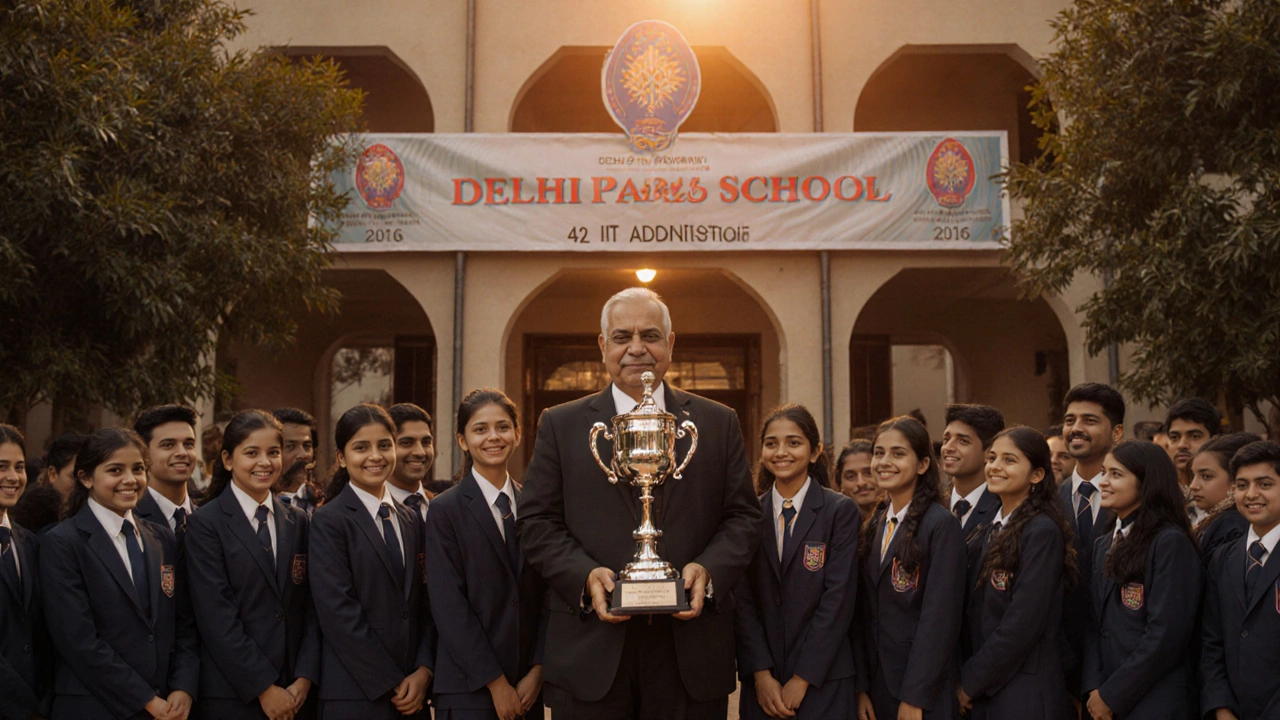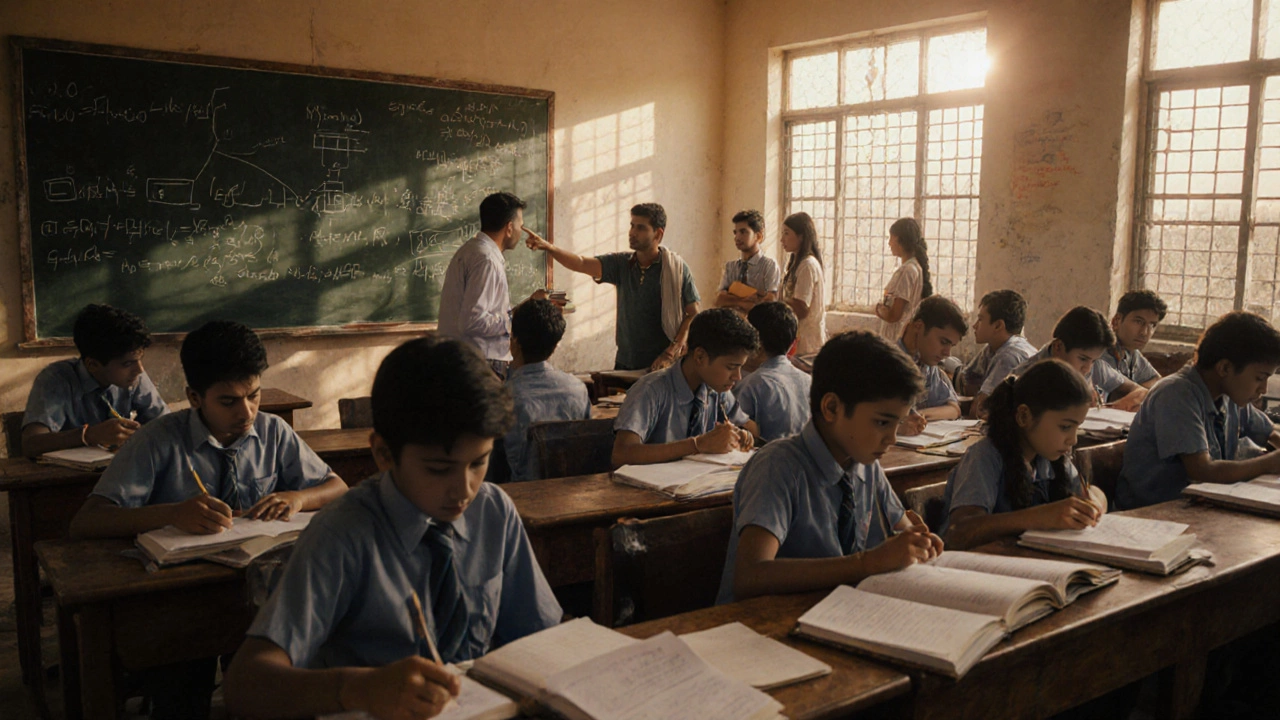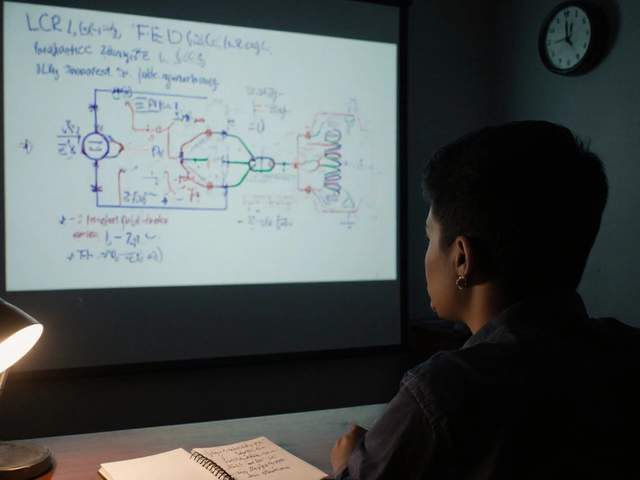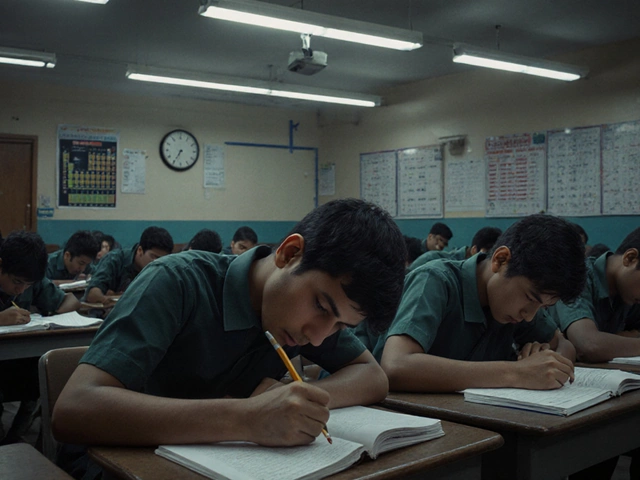IIT Admission Predictor
Enter values and click "Predict IIT Admission Rate" to see estimated results
Top Performing Schools (2024)
| Rank | School | Students Admitted | Percentage of Total |
|---|---|---|---|
| 1 | Delhi Public School, R.K. Puram | 42 | 0.26% |
| 2 | Kendriya Vidyalaya (NCR) | 38 | 0.24% |
| 3 | The Shri Ram School, Delhi | 28 | 0.18% |
| 4 | Sainik School, Bhubaneswar | 15 | 0.09% |
| 5 | St. Andrew’s High School, Mumbai | 12 | 0.07% |
Every year, thousands of Indian high‑schoolers dream of cracking the IIT gate. Parents and teachers keep asking the same question: which school actually pushes the most kids into those elite campuses? The answer isn’t just a brag‑ging statistic - it shows what teaching practices, culture, and resources work when you’re aiming for the toughest engineering entrance in the country.
TL;DR - Quick Takeaways
- Delhi Public School (R.K.Puram) topped the 2024 list with 42 students admitted to IITs.
- Kendriya Vidyalaya (National Capital Region) follows closely with 38 IIT entrants.
- The Shri Ram School, Sainik School Bhubaneswar, and St. Andrew’s High School round out the top5.
- Success comes from a mix of strong faculty, focused JEE preparation, peer motivation, and early exposure to problem‑solving.
- Other schools can replicate the model by investing in trained JEE mentors, regular mock tests, and a culture that celebrates academic risk‑taking.
Understanding the IIT Admission Pipeline
Getting into an IIT is a two‑step process. First, students appear for the Joint Entrance Examination the national engineering entrance exam conducted in two stages - JEE Main and JEE Advanced. Only the top ~2.5% of Main candidates qualify for Advanced, and from there, roughly 16,000 seats are allocated across 23 IITs.
Because the competition is so fierce, the small differences in preparation can translate into big differences in outcomes. That’s why schools that consistently produce a high number of IIT‑admitted students attract a lot of attention.
How We Gathered the Numbers
Official IIT admission lists are published every year on the institute websites. We compiled data from the 2022‑2024 admission cycles, focusing on students whose school‑affiliation was mentioned in the merit list. When a school name appeared multiple times (e.g., campuses of the same chain), we aggregated them under the umbrella name. The resulting figures represent confirmed IIT entrants, not aspirants who cleared JEE but chose other paths.
We cross‑checked the numbers with reports from the Ministry of Education and reputable education‑tracking portals to ensure accuracy.

Top Schools Sending the Most Students to IIT (2024)
| Rank | School | Students Admitted to IITs | % of Total IIT Entrants (≈16,000) | Notable Features |
|---|---|---|---|---|
| 1 | Delhi Public School, R.K.Puram a premier CBSE school in New Delhi known for a strong STEM focus | 42 | 0.26% | Dedicated JEE faculty, weekly problem‑solving labs, alumni mentorship network |
| 2 | Kendriya Vidyalaya (National Capital Region) central government schools with a uniform curriculum across India | 38 | 0.24% | Integrated JEE modules, strong math club, regular mock exams |
| 3 | The Shri Ram School, Delhi known for progressive pedagogy and a focus on analytical thinking | 28 | 0.18% | Problem‑based learning, senior peer tutoring, partnership with FIITJEE |
| 4 | Sainik School, Bhubaneswar a defense‑oriented residential school with disciplined study routines | 15 | 0.09% | Strict daily study schedule, emphasis on physics & chemistry, government scholarships |
| 5 | St. Andrew’s High School, Mumbai private school with a strong math and science faculty | 12 | 0.07% | Weekly JEE test series, mentorship from former IITians, well‑equipped labs |
These five institutions collectively contributed about 1.0% of all IIT entrants in 2024 - a tiny slice of the total, but a massive impact when you consider the average school sends fewer than two students per year.
What Drives Their Success?
There’s no single magic bullet, but a pattern emerges when you look at the top schools:
- Specialized JEE Faculty - Teachers who have either cracked JEE themselves or have years of coaching experience. They know the exact weightings of topics and can tailor lessons accordingly.
- Regular Mock Tests - Simulated JEE papers every month help students gauge All India Rank (AIR - the position a candidate holds among all test‑takers nationwide) potential early and adjust study plans.
- Peer Competition - A culture where classmates push each other, discuss challenging problems during breaks, and celebrate small wins.
- Early Exposure - Introducing Olympiad‑level problem‑solving in grades 9‑10 builds analytical muscles before JEE becomes the sole focus.
- Parent Engagement - Regular workshops keep families informed about the evolving JEE syllabus, recommended study hours, and stress‑management techniques.
When these ingredients mix, the school creates a self‑reinforcing loop: success stories attract better teachers, which in turn produce more success stories.
Can Any School Replicate This Model?
If you’re a principal, teacher, or parent reading this, you don’t need a Delhi‑based elite brand to boost numbers. Here’s a practical roadmap:
- Hire or train a JEE‑focused teacher - Look for candidates with a recent JEE rank or a proven track record at a coaching institute.
- Set up a weekly problem‑solving club - Use past JEE papers, but keep the atmosphere collaborative, not punitive.
- Introduce monthly mock exams - Partner with online platforms that provide detailed analytics, then review results in class.
- Create a mentorship program - Alumni who are now IIT students can give talks, share study notes, and answer queries.
- Focus on fundamentals - Emphasize concepts in physics, chemistry, and mathematics rather than rote memorization.
Even small steps, like dedicating a single classroom for JEE practice after school hours, can make a noticeable difference over a three‑year cycle.

Common Misconceptions About IIT‑Ready Schools
Many people think that only private elite schools can produce IIT toppers. Reality check:
- Coaching isn’t the sole factor. While many students attend external institutes, the school’s day‑to‑day curriculum still matters most.
- Location doesn’t limit success. Schools in tier‑2 cities like Bhubaneswar have matched Delhi schools when they adopted disciplined study routines.
- High fees don’t guarantee results. Some low‑cost government schools outperform high‑fee private schools because of strong teacher commitment.
The takeaway? Quality of preparation beats brand name every time.
Frequently Asked Questions
Which school currently sends the most students to IIT?
Based on the 2024 admission data, Delhi Public School, R.K.Puram leads with 42 students gaining entry to various IITs.
How reliable are these numbers?
The figures come directly from official IIT admission lists for 2022‑2024, cross‑checked with Ministry of Education releases and independent education‑tracking platforms.
Can a regular school start producing IIT entrants?
Yes. By adopting focused JEE faculty, regular mock testing, peer‑learning clubs, and mentorship from IIT alumni, many schools have seen a steady rise in admissions over three to five years.
Do these schools rely on external coaching institutes?
External coaching helps, but the core preparation happens within the school’s own curriculum and extracurricular programs. Schools that integrate JEE material into regular classes outperform those that depend solely on outside coaching.
What is the best way for parents to support their child’s IIT dream?
Create a calm study environment, encourage participation in school‑run JEE clubs, monitor mock test results, and avoid over‑pressuring the child. Balanced nutrition and regular breaks improve focus during the long preparation period.
Next Steps for Aspirants and Schools
If you’re a student aiming for IIT, start by checking whether your school offers any of the five success factors listed above. If not, explore local coaching options that provide regular mock tests and a solid faculty.
For school administrators, set a 3‑year plan: appoint a JEE coordinator, allocate a dedicated study room, and track yearly admission numbers. Measure progress against the benchmark of 10‑15 IIT entrants per year - a realistic target for a mid‑size school.
Remember, the journey to IIT is a marathon, not a sprint. Consistency, the right guidance, and a supportive community are the real engines behind those impressive school‑wise numbers.





